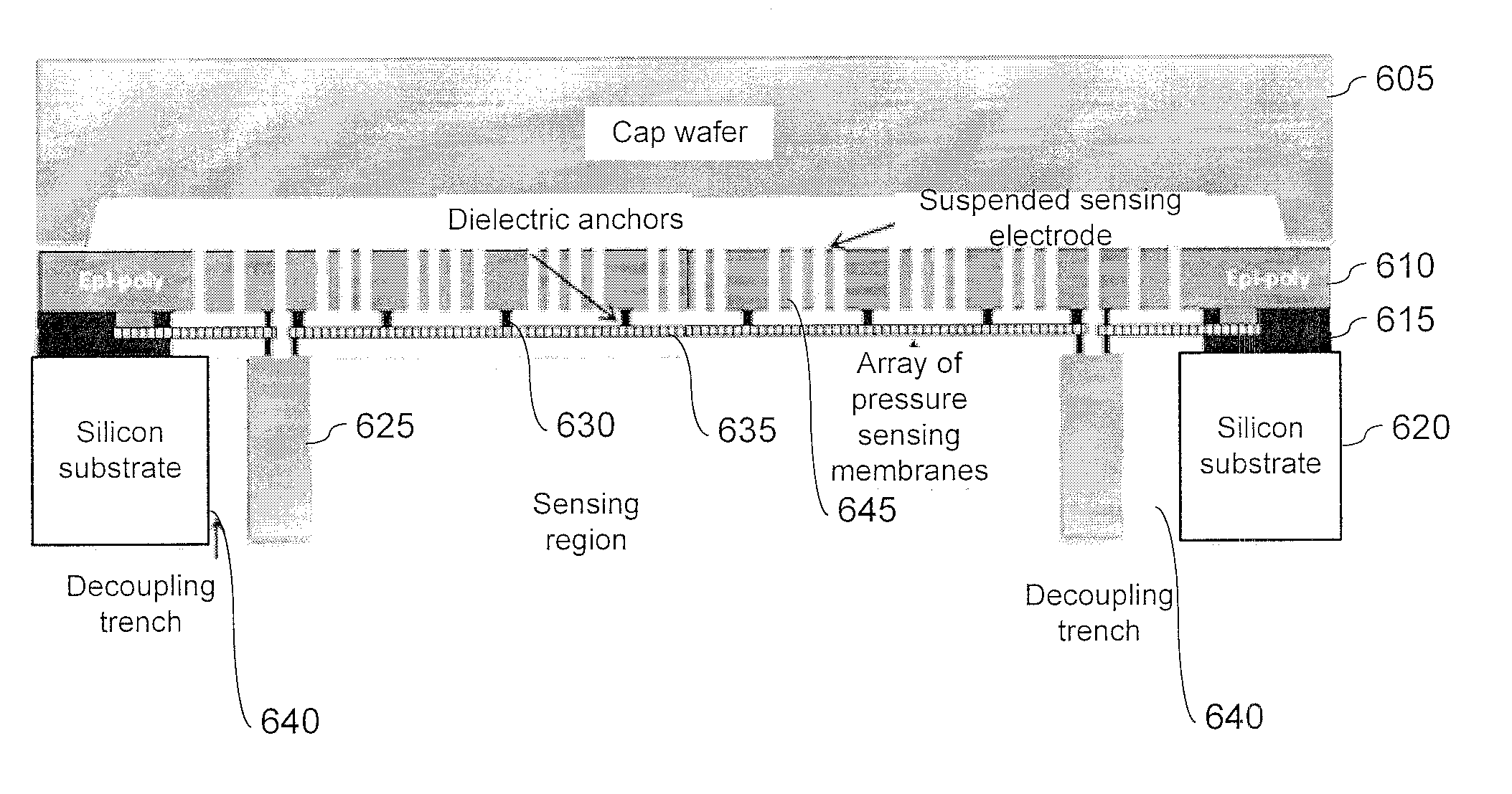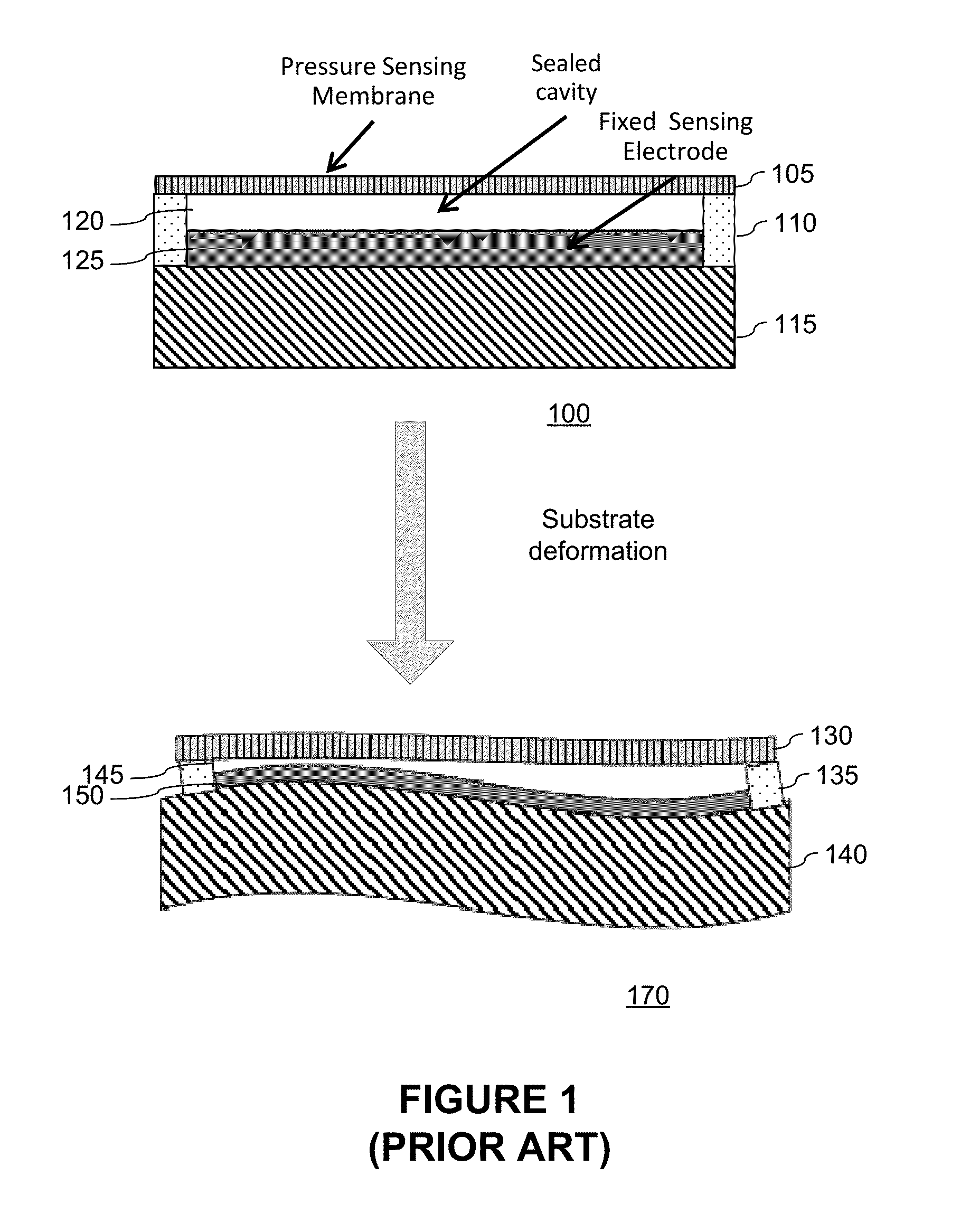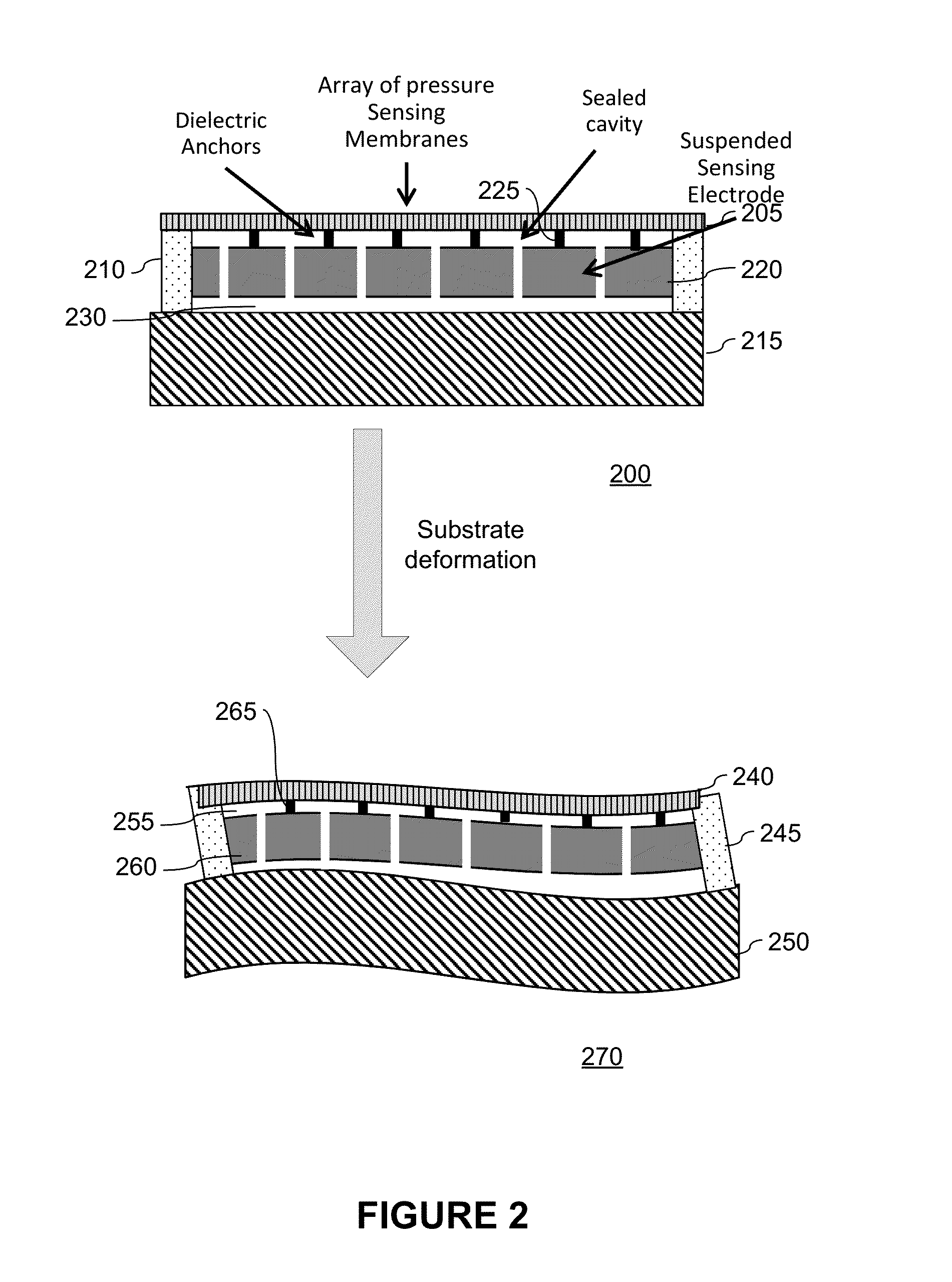MEMS pressure sensor with improved insensitivity to thermo-mechanical stress
a technology of thermo-mechanical stress and pressure sensor, which is applied in the direction of fluid pressure measurement, fluid pressure measurement by electric/magnetic elements, instruments, etc., can solve the problems of non-uniform stress within the substrate, non-uniform stress may be accumulated in the mems device, and offset or sensitivity drift, etc., to achieve the effect of increasing pressure insensitivity and improving pressure sensor performan
- Summary
- Abstract
- Description
- Claims
- Application Information
AI Technical Summary
Benefits of technology
Problems solved by technology
Method used
Image
Examples
Embodiment Construction
[0027]The following description is set forth for purpose of explanation in order to provide an understanding of the invention. However, it is apparent that one skilled in the art will recognize that embodiments of the present invention, some of which are described below, may be incorporated into a number of different systems and devices. The embodiments of the present invention may be present in hardware, software or firmware. Structures shown below in the diagram are illustrative of exemplary embodiments of the invention and are meant to avoid obscuring the invention. Furthermore, connections between components within the figures are not intended to be limited to direct connections. Rather, data between these components may be modified, re-formatted or otherwise changed by intermediary components.
[0028]Reference in the specification to “one embodiment”, “in one embodiment” or “an embodiment” etc. means that a particular feature, structure, characteristic, or function described in c...
PUM
| Property | Measurement | Unit |
|---|---|---|
| thermo-mechanical insensitivity | aaaaa | aaaaa |
| dielectric | aaaaa | aaaaa |
| pressure | aaaaa | aaaaa |
Abstract
Description
Claims
Application Information
 Login to View More
Login to View More - R&D
- Intellectual Property
- Life Sciences
- Materials
- Tech Scout
- Unparalleled Data Quality
- Higher Quality Content
- 60% Fewer Hallucinations
Browse by: Latest US Patents, China's latest patents, Technical Efficacy Thesaurus, Application Domain, Technology Topic, Popular Technical Reports.
© 2025 PatSnap. All rights reserved.Legal|Privacy policy|Modern Slavery Act Transparency Statement|Sitemap|About US| Contact US: help@patsnap.com



